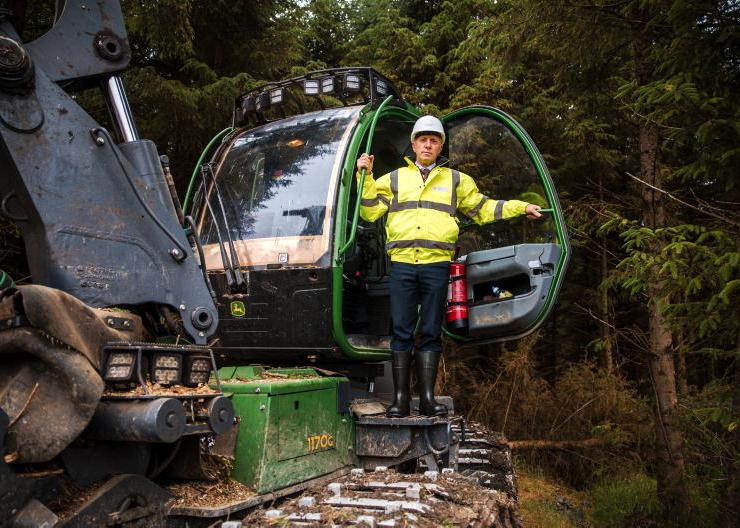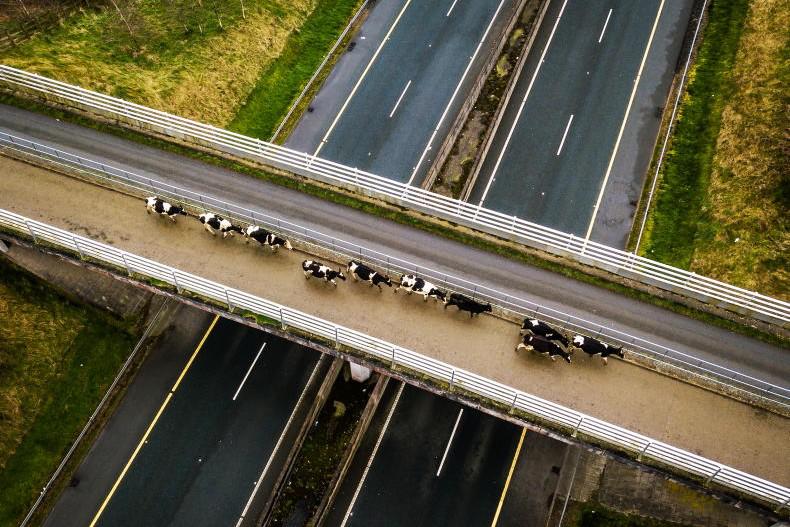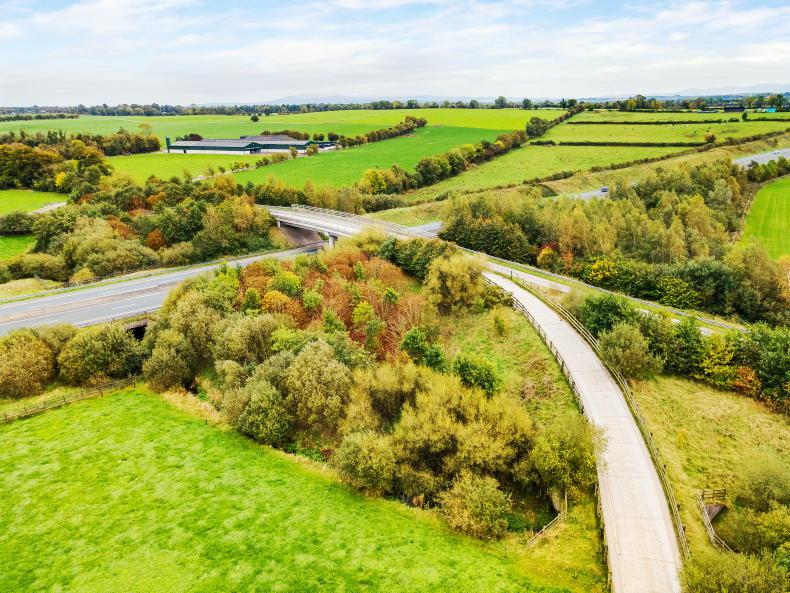External factors play a major role in the profitability of all land uses. Forestry, like agriculture, depends to a large degree on export markets so is subject to global price fluctuations. A shortage of timber in the US, as occurred in 2020 and early 2021, indirectly led to price increases in Ireland and the UK as Sweden redirected some of its exports from the UK to the lucrative US market.
Average house prices increased by €15,000 in Ireland as a result, while the National Association of Homebuilders estimated that the rise in log prices added “over $36,000 to the cost of a new single-family home in the ?US”. Global timber shortages, Brexit and COVID-19 all played a role in the dramatic increase in timber prices but these could have been minimised in Ireland if timber ready for harvest had been licensed.
Unlike agriculture, forest management is subject to continuous licensing, which is a major barrier for farmers converting some of their holdings to forestry. It is also a disincentive for investors.
Add in the replanting obligation which decreases the value of land and other factors such as setting aside up to 30% of the land to non-productive forestry, the disadvantages of forestry can outweigh the advantages of what should be a viable land use.
While stability has been restored in timber prices in recent months, exceptional high prices were largely artificial due to a dysfunctional felling licence system as there was an abundance of timber available for either thinning or final harvest which will continue.
Ireland’s timber production is estimated to increase from 4m m3 at present to over 7m m3 within 13 years (Table 1), while production in Northern Ireland will increase to 0.7m m3.
Carbon
The Government by now should be encouraging farmers and other landowners to plant every available acre of marginal land to achieve Ireland’s climate change targets. Yet, afforestation licences are down to a trickle even though the Government has identified “afforestation is the single largest land-based climate change mitigation measure available to Ireland” in its Climate Action Plan.
With agriculture identified as the single greatest emitter of greenhouse gas (GHG) in Ireland, the forestry option makes environmental sense. A Society of Irish Foresters’ (SIF) report bases its findings on the Irish Government shadow carbon price for non-European Trading Scheme (ETS) sectors at €32/t. This gives a potential value of the carbon sequestered as €7,910/ha having allowed for a buffer of 20%.
“Carbon values of this scale are more than sufficient to incentivise farmers and landowners to afforest areas of the order of 10,000ha to 15,000ha per annum,” the report states.
Economic debate
The debate on the economic benefits and on the commercial viability of forestry in marginal land is over.
Commercial forestry in Ireland produces some of the highest-yielding forests in Europe over short rotations with a ready market in Ireland and the UK. They produce incomes of between €20,000/ha and €30,000/ha from thinning and final harvest after the annual 15-year premium payments cease.
The financial returns from forestry also outweigh the returns from farm systems on similar soils as researched by Teagasc.
High production Sitka spruce yield class (YC) 24 (m3/ha/annum) provides an annual income of €602/ha, well above cattle rearing or suckler cow production (€428/ha), cattle fattening (€462/ha) and sheep (€382/ha).
Medium yield forests are capable of providing an annual income of €415/ha. Even allowing for 25% unproductive areas (including Areas for Biodiversity Enhancement (ABEs) and native species), the returns are still strong. High yields are reflected in prices paid for forest land.
Suitable bare marginal land is priced between €14,000 and €16,000/ha in Leinster and Munster, and for large and choice parcels in the west. Planted land at the first thinning stage varies considerably but well-roaded, semi-mature accessible crops in the east and south are still achieving prices in the €14,000 to €20,000/ha range and for some large high-yield class plantations in the west and northwest.
Prices of this magnitude illustrate that the forest land market is still robust despite the downturn in afforestation and a cumbersome licensing system.
Stimulus
However, the market needs stimulus including a carbon afforestation scheme as proposed by the SIF report. “This scheme is not to displace agricultural production but to integrate carbon based afforestation within the farm enterprise,” maintains the report.
There are three forestry licences: afforestation, roading and felling. A regular supply of all licences is required so Ireland achieves a viable forestry and forest products sector.
To achieve the Government’s climate targets, it is estimated that a minimum afforestation target of 10,000ha is required. The average planting size in Ireland is 7.5ha so a programme of this scale would require 1,300 licences approved and planted or 2,100 licences to allow for farmers time to take up the planting option or change their minds.
This would require approximately 170 licences issued monthly as opposed to the current performance of 50. Despite an increase of forestry inspectors and ecologists afforestation licences have remained static for two years.
Forest road licences issued in 2021 amounted to 264km, which was almost double the 2020 performance. This performance will need to be maintained to gain access to the increased volumes of timber that are forecast to increased to 7.15m m3 by 2035 (Table 1).
Felling licences have also increased especially for Coillte whose timber supply is well advanced. The company is now in a position to guarantee supply to sawmills for most of 2022. When asked earlier this year about felling licences, a sawmill spokesperson acknowledged the increase for Coillte but said: “We still need more licences for the private sector”. He stressed the importance of continuity of supply to timber processors and their customers.
The way to ensure continuity of supply is to treat thinning as an essential silvicultural activity without the need for a felling licence. Final harvest or clearcut is different and should require a felling licence to avoid the risk of deforestation and to ensure long-term carbon accounting benefits.
This approach would remove the uncertainty that exists in the forest land market. Forest land can be defined as bare land suitable for forestry or planted land. Planted or unplanted, somewhere along the way the value of forest land, depends on the owner’s ability to gain a forestry licence.










SHARING OPTIONS